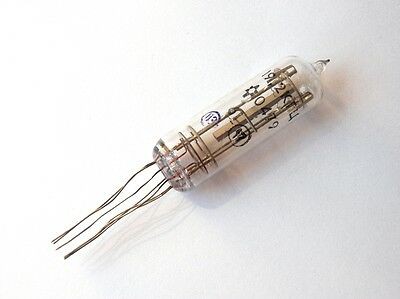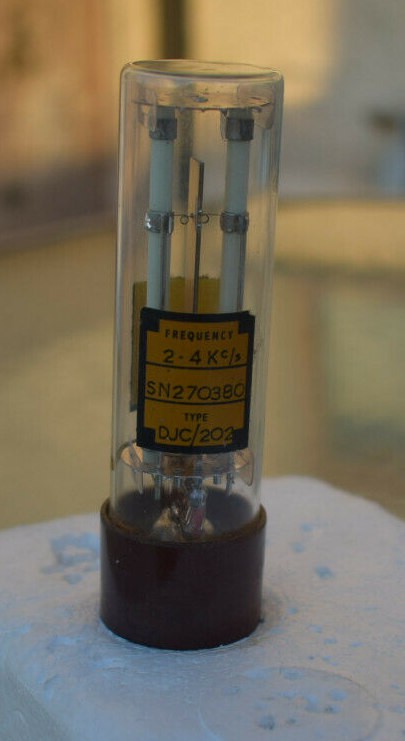At first I was like "OK I will try to run at 115200 bauds" and then I realised tht the GBWP of certain transistors wouldn't allow that.
Anyway I started searching for 1.8432 MHz quartz crystals (I ordered some) and the first thing to do is to drop the frequency as much as possible, first by factors of 2-4-8-16 so more complex gates/circuits can be used at lower frequencies.
Then I encountered tiny 38.4KHz crystals on eBay : this won't provide much bandwidth but it is much more suitable for Germanium trannies. I don't mind that it won't run at 115200 bauds because it saves a lot of high frequency dividers... But we're only getting started !
These modern tiny crystals will come from China, someday, when/if the export problems (due to the virus epidemic) are solved. No such problem with Ukraine : our old friend bird_sr71a has some better resonators, at "only" 19200Hz ! In the worst case, if I have to divide by 2, I can still reach 9600 bauds, a pretty standard and useful frequency, though I'll see if/how I can keep up with 19.2kbps.

It's much more classy and more coherent with the rest of the technologies I'll deploy :-)
But we can go even further...
Closer to Paris, a British store offers European vintage crystals that are even older.

Now it's very, very slow... and I hope the OC70 will not complain ! Worst case will be 1200 bauds, which is still "pretty fast" if you were born in the 70s in France : the Minitel used 1200 bauds over POTS.
I'm expecting to receive a pair of these ultra-slow resonators, so there would be one for the send side and one for the receive side.
Driving these tubes would be easy with a pair of OC70 and the oscillator circuit that I discussed in the last log.
So I have a frequency source for a variety of transistor technologies :
- OC70/OC139 "lazy germanium" in glass tubes -> 2.4Kbps would be good
- I have faster germanium transistors but very very few NPN for 19.2K
- KT315 & KT361 : silicon planar Russian complementary trannies : they could work at 38.4K easily. I hope.
- I have a very good supply of BC550/549 and BC559 and I hope they can manage to reach 115200 bps :-)
Anyway : I still lack tons of NPN germaniums. The price of the OC139/OC140/OC141 has skyrocketted due to the "DIY disto pedal frenzy", along with many others... I have ample supplies of OC70 but my minimal latch circuit requires NPN as well :-/
 Yann Guidon / YGDES
Yann Guidon / YGDES
Discussions
Become a Hackaday.io Member
Create an account to leave a comment. Already have an account? Log In.
You could use a non-crystal oscillator, and maybe trim it. As long as it doesn't drift outside tolerance limits it will be a valid serial steam.
Are you sure? yes | no
Hi Ken ! :-)
Given the "volatility" of the Germanium characteristics, it would create more problems than it solves. And it would look less strange AND awesome. And I have found the crystals and I know how to drive them so it's not a problem :-)
Furthermore, the point is to share as many techniques between this project and #Clockwork germanium :-) Indeed, I have found a pair of vintage 2500Hz crystals on the same store, that will be a fantastic fit and an unbeatable "vintage" touch for the clocks I would still like to build.
Are you sure? yes | no
It's possible to design out the Ge variance so that it only depends on R and C. After all, transistor radios were able to stay tuned to stations.
Are you sure? yes | no
If you have references, I'm interested.
Not because I want to design a precise RC oscillator, but because I want to design a precise Xtal oscillator ;-)
Are you sure? yes | no
Just have sufficient gain and the transistor characteristics drop out of the equations. For example here is the Garner oscillator that dates back to Ge transistors that I used for stylophones back in the day: https://hackaday.io/page/5877-garner-oscillator
Are you sure? yes | no
Hmmmm if it is only about gain, then it's a matter of binning the trannies and use the most gainy at the Xtal's legs, right ?
Hmmm i'll have to experiment :-D
Are you sure? yes | no